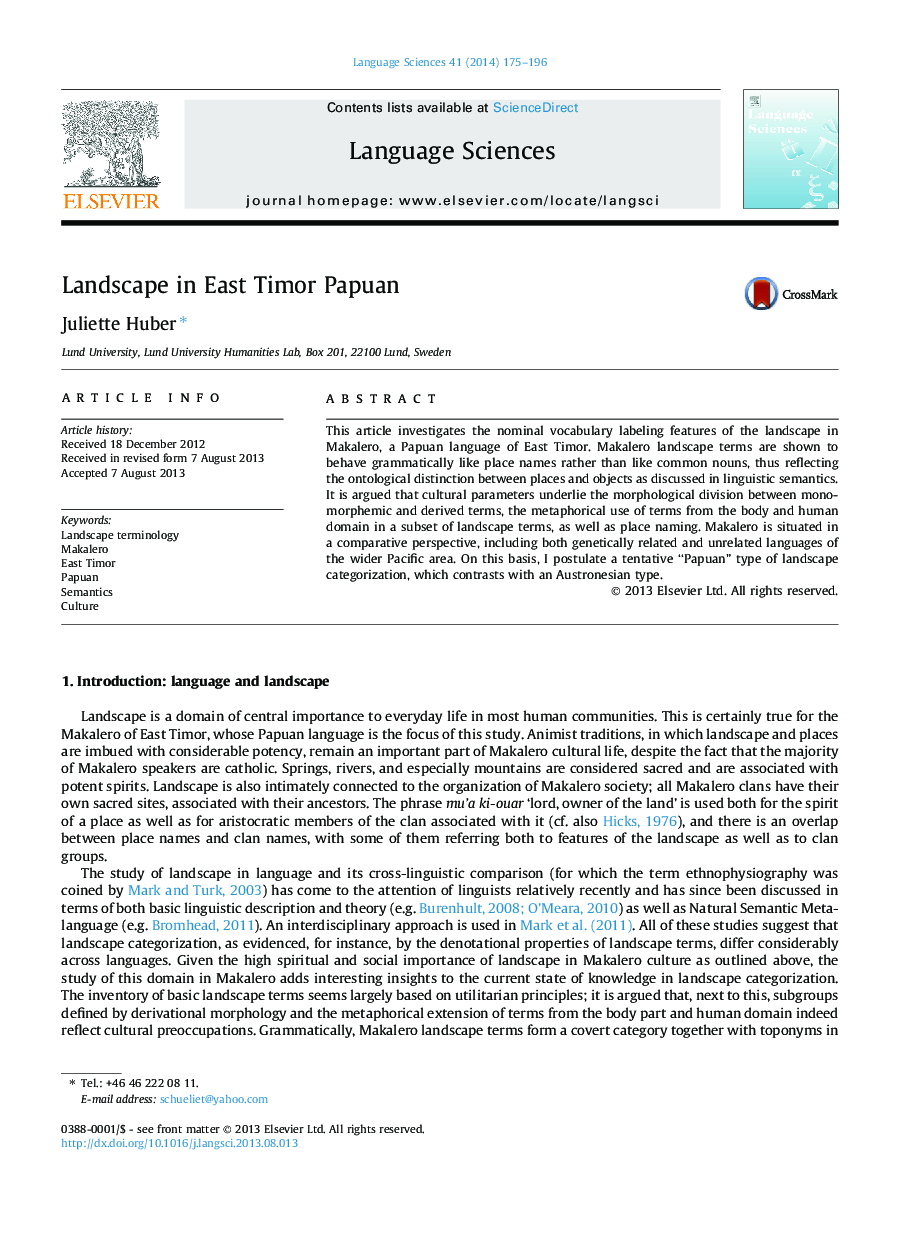| Article ID | Journal | Published Year | Pages | File Type |
|---|---|---|---|---|
| 1103151 | Language Sciences | 2014 | 22 Pages |
•Cultural and spiritual factors are prominent in Makalero landscape categorization.•Landscape terms and toponyms form a covert grammatical class in Makalero.•A tentative “Papuan” type of landscape categorization can be identified.•A common “Papuan” feature is the absence of “river” as a conceptual primitive.
This article investigates the nominal vocabulary labeling features of the landscape in Makalero, a Papuan language of East Timor. Makalero landscape terms are shown to behave grammatically like place names rather than like common nouns, thus reflecting the ontological distinction between places and objects as discussed in linguistic semantics. It is argued that cultural parameters underlie the morphological division between monomorphemic and derived terms, the metaphorical use of terms from the body and human domain in a subset of landscape terms, as well as place naming. Makalero is situated in a comparative perspective, including both genetically related and unrelated languages of the wider Pacific area. On this basis, I postulate a tentative “Papuan” type of landscape categorization, which contrasts with an Austronesian type.
